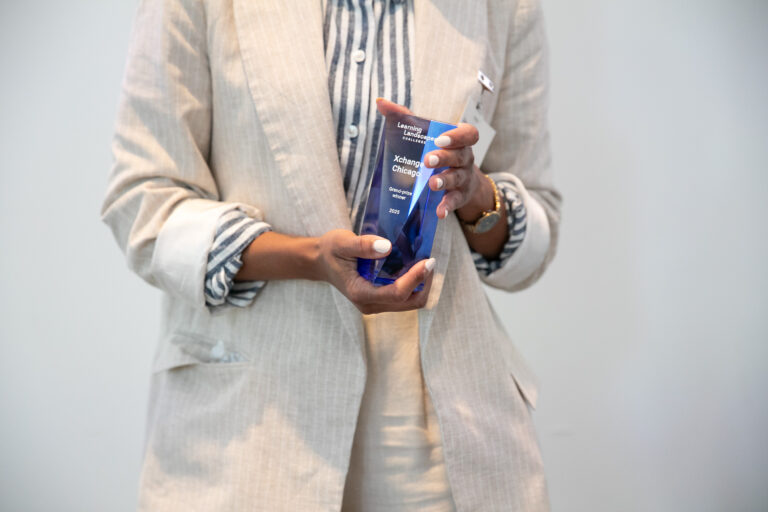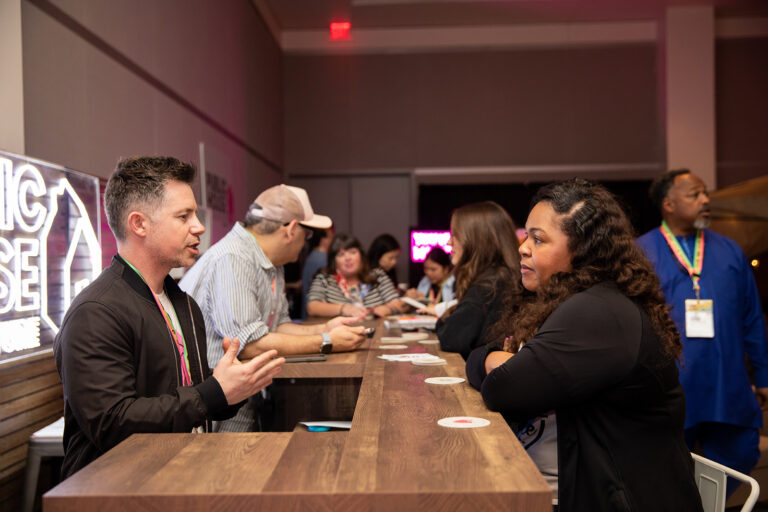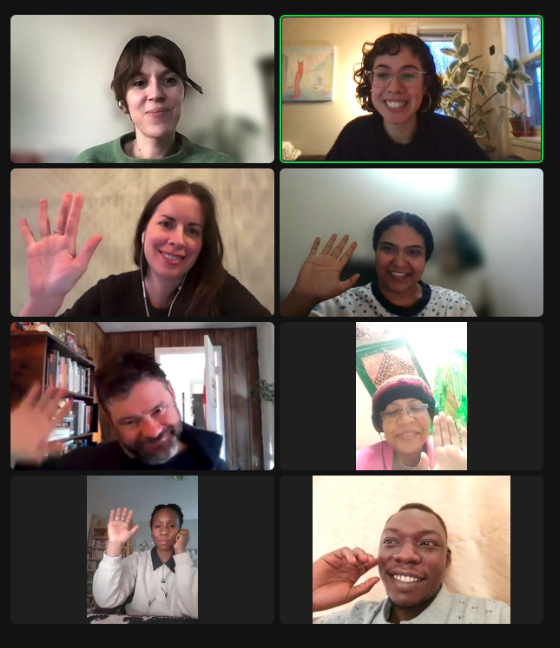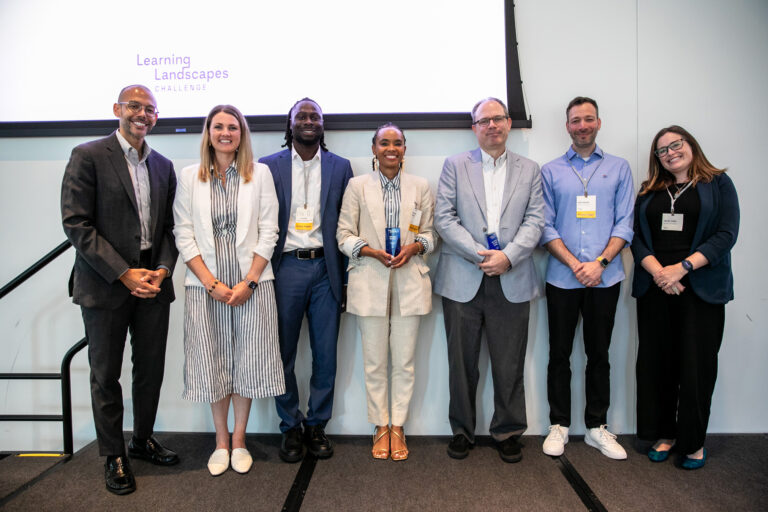Caroline Sinders is a machine-learning-design researcher and artist, exploring the intersections of technology, society, and public good. As the founder of Convocation Design + Research, they focus on creating innovative solutions for complex communication problems through AI and user research. Their work has been supported by fellowships with the Harvard Kennedy School, the Mozilla Foundation, and the International Center of Photography. Their projects have been featured in prestigious institutions such as the Tate Exchange in Tate Modern, Victoria and Albert Museum, MoMA PS1, and the Houston Center for Contemporary Craft.
Below is a summary of Caroline’s conversation with Siegel Research Manager, Madison Snider.
Madison Snider: I would love to start with how you first got interested in both human rights and technology research, and then maybe how those two subjects came together in your work today.
Caroline Sinders: My undergrad degree is in photography with a focus on journalism, photojournalism, and digital culture. I went to undergrad during an interesting time, from 2006 to 2010, during a massive recession and at the cusp of digital media in journalism. I graduated the year Instagram launched, which made it an interesting time to be a photographer. Do you remember the iconic image of the emergency plane landing in the Hudson? It was taken with a cell phone camera by a young boy.
It was a time when we were talking about the concept of the photographer and how cell phone photography impacts journalism. This was before the Arab Spring, and it shaped my perspective that there needed to be tools specifically for digital culture. I started thinking about photography’s future and the need to create online spaces for photographers instead of just forcing photography into blogging templates.
This led me to study digital culture and how our offline lives are represented online. That became a space for activism. It sounds basic now, but in 2009, recognizing the power of social media and digital files like images for political activism was transformative.
I was also exploring feminist uses of social media and how handheld technology could be used for localized activism to create larger movements via the internet. These thoughts pushed me to pursue a master’s in technology at NYU’s Interactive Telecommunications Program (ITP).
In the years following, I started thinking about how social media design impacts user safety, leading me to examine online gender-based violence and events like Gamergate. I wanted to understand how social media could support feminist and political activism while keeping activists safe. At the time, concepts like trust and safety were just emerging. Now there’s a robust body of research spanning activism, journalism, academia, and civil society.
Madison Snider: It’s fascinating to hear the trajectory. On your website, you describe your role as a machine learning design researcher and artist. Can you unpack what that means and how you landed on that description?
Caroline Sinders: It feels a bit outdated because I’ve expanded beyond machine learning. But machine learning was a big focus from 2015 onward, both at IBM Watson and in my art practice. My work, Feminist Data Set, launched in 2017 to explore the transformative impact of AI on industry and art.
I distinguish between AI-facilitated art, where you build models and curate data sets, and generative AI, which is prompt-driven. My interest lies in understanding how technology is used and misused, starting with the consumer’s perspective and expanding to policy and the tech stack.
In my collective with Eryk Salvaggio, Algorithmic Research Resistance Group, we red-team or glitch AI systems, turning those errors into art. Similarly, feminist data sets involve interrogating every aspect of the systems to make them more equitable. My design research focuses on analyzing consumer-facing products, their models, and technology stacks, often uncovering harms like negative assumptions or data misuse.
Madison Snider: Collaboration seems to be a big part of your work. Can you tell me about recent collaborations? For example, your work with Convocation Research + Design on Elon Musk and election misinformation. Now that we’re past the election, what does this analysis tell us about misinformation and platform owners like Musk?
Caroline Sinders: We were really lucky to collaborate with Madeleine Mays of CBS News, who I met through an ICFJ workshop series on misinformation and disinformation. A big part of Convocation’s work is built on collaboration. Madeleine and I started talking online during the workshops, and came up with a few ideas to collaborate. CBS News, where Madeleine works, was really interested in an idea of mapping and understanding misinformation ‘vectors’ on Twitter, and Elon is one of those vectors. Elon was heavily focused on the U.S. election, and for us, it was important to examine the role he played. Even though he’s not a traditional political pundit or policymaker, he is a technology platform owner.
We found a significant portion of Elon’s tweets shared misinformation. This built on existing research showing that Twitter actively promoted his tweets. Our qualitative research with activists, combined with personal account observations, revealed how difficult it was to limit his content. Blocking him was the only effective method. We published our report before the U.S. election.
While he’s not running for office, it looks like he might hold an office role now, and his influence on X is significant. This outsized influence raises ethical questions about the organic versus algorithmic amplification of his content. Research suggests algorithmic persuasion amplifies his own content, making it nearly impossible for platform users to avoid interacting with him.
Madison Snider: Could you share more about your involvement with the Public Interest Technology Alumni Network? How did this project begin?
Caroline Sinders: The network began with fellowships like those from the Media Democracy Fund, Mozilla, and the Ford Foundation. These fellowships created a convening space for public interest technologists. Public interest technology overlaps with internet freedom, especially in the Global South. As a Mozilla Fellow in 2018–2019, I joined this digital space for fellows to connect after their programs.
Many of us in the network are independent technologists or work in small labs like mine. Being part of this network is crucial because it connects those of us working across academia, policy, law, and activism. We face shared challenges like state-level threats, online harassment, or funding shortages. This network provides support, shared learning, and collaboration opportunities.
Independence allows us to work with diverse organizations and respond quickly to emerging issues. For instance, at Convocation, we provide on-the-ground training or immediate support. Being nimble is a key advantage of small groups or independent technologists.
The network includes people from organizations like Global Voices, Color of Change, and former fellows from Mozilla and Open Technology Fund. The diversity of experiences enables rich discussions about technology, law, and their impact on communities.
Madison Snider: Public interest technology is such a broad and evolving field. How do you define it?
Caroline Sinders: Defining public interest technology has been a challenge within the network. Broadly, it involves technology designed with some form of public benefit or transparency. It doesn’t have to be open source but should prioritize public needs over proprietary interests. For instance, a privacy-focused pregnancy tracking app for a specific community could qualify as public interest technology because it addresses real harms and needs.
However, the term can be stretched or misused—OpenAI could claim to fit this definition, for example. A community-centered and public-good-oriented approach is critical. We’re working on refining this definition to exclude misinterpretations while embracing genuine public interest initiatives.
Madison Snider: Absolutely. The collaborations you’ve described highlight the skill of learning to collaborate across sectors often perceived as siloed. Until you’re in the field experimenting, trying, and sometimes failing, you might not realize the creative potential of interdisciplinary work. Collaboration isn’t typically taught in many university programs, particularly in technical fields, so having a network of people to guide you is invaluable.
Caroline Sinders: Totally. That’s one of the things you pick up naturally in our group because collaboration is so embedded in everyone’s practice. For example, during meetups, someone might say, “You should talk to this person; I’ll introduce you.” Or they might suggest a different organization or approach. It’s a beautiful aspect of the community.
But, as you mentioned, collaboration is hard to teach. In master’s programs, you’re often siloed, though interdisciplinary programs help. At ITP, one of my classes included journalists from the journalism school, and we were put on teams to work on ideas together. ITP’s student cohort is full of folks with all different backgrounds- from journalists, young technologists, seasoned engineers from Apple, artists, dancers, poets, high school teachers, etc. That experience in this particular class of working with journalists and with ITP’s own students who are so interdisciplinary has influenced me to this day because it showed how it important it is to work with folks of different backgrounds. We came up with more human centered, thoughtful, engaging, and innovative ideas because of how different our backgrounds were. Our differences that we brought to our team is what made the team and our ideas so strong.
When I teach, I share lessons I’ve learned in the field, like the “power of a PDF.” Sometimes, people don’t need a new piece of technology—they need a clear, simple resource, like instructions on paper or someone to walk them through filling out a confusing form. After Hurricane Ida, for example, the most helpful thing wasn’t a new app but someone guiding residents through FEMA forms.
Madison Snider: That resonates—it’s like addressing infrastructure issues at their most fundamental, low-tech level. The “power of a PDF” is a great analogy for that. To wrap up, what research are you excited about on the horizon?
Caroline Sinders: I’m starting a project with my dear friend Dr. Romy Gad el Rab, working with Bits of Freedom on addicting design. Romy is an NHS psychiatrist specializing in online addiction, particularly in children, and works with an online gaming addiction clinic in the UK. I have family members that suffer with addiction, but I’ve been really interested in this topic. This is going to be one of the things we’re focusing on next year as a small research project. Hopefully, we can get more funding to expand on this.
I’ve also been working on some AI and art projects with a group called UKAI in Canada. We’re creating a zine for artists to help them understand AI and the fears around it, particularly in this era of generative AI. In addition, we’re hosting a town hall with DACS, a UK group focused on artists and copyright. We’re putting out a report in March in response to a government inquiry on generative AI. It includes workshops with artists discussing copyright concerns, fears, and opportunities with generative AI. We’re doing other smaller, interesting projects as well.
Madison Snider: My last question is: What are you reading, watching, or listening to right now that you’d recommend?
Caroline Sinders: I recently read Bright Young Women by Jessica Knoll during my maternity leave. It’s about the Ted Bundy murders but told from the perspective of a friend of one of the victims, without ever mentioning his name. It focuses on the womens’ stories. While it’s sad, it’s also funny and very feminist. It highlights how women were often dismissed in the 70s and serves as a coming-of-age story. I highly recommend it.
As for podcasts, one of my favorites is Normal Gossip. I love gossip—like if your plumber had something to say about another plumber, I’d want to know. The podcast anonymizes user-submitted stories, and the host retells them with made-up names alongside a funny guest. It’s lighthearted and a great way to unwind.
My favorite TV show, Somebody Somewhere, is coming to an end. It’s a really lovely show on Max (formerly HBO), and I think everyone should watch it.
Madison Snider: Great recommendations! Anything else you’d like to add?
Caroline Sinders: Just follow us at Convocation Research +Design on Instagram, BlueSky, and Twitter. I’m @CarolineSinders everywhere—pretty boring username. Keep an eye out for exciting projects we’re working on next year. If anyone wants to collaborate, please reach out! We love impactful projects with nice people, and as a small org, collaboration helps us scale our capacity. Let’s create something meaningful together!
